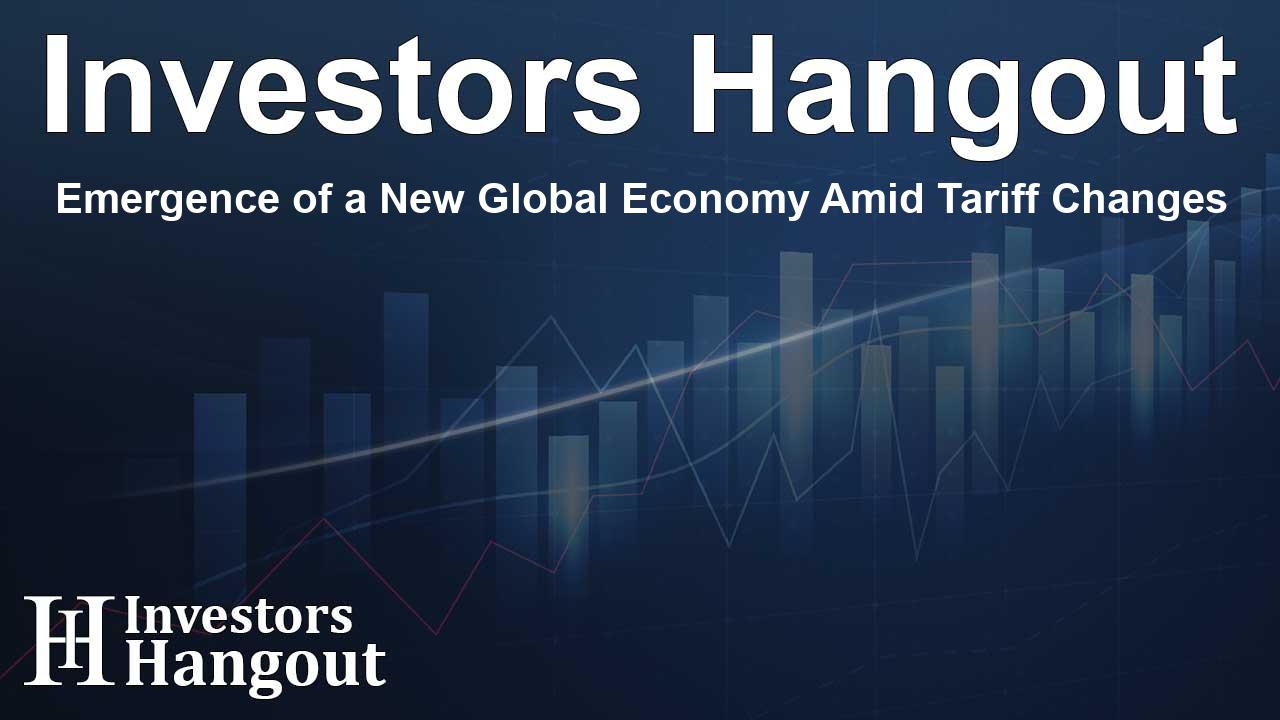Emergence of a New Global Economy Amid Tariff Changes

Transforming Trade Dynamics in a New Global Era
Recent shifts in trade, particularly through new tariffs, are not just reshaping commerce; they are rapidly advancing the development of a multipolar global economy.
The concept of moving beyond a US-centric global economy is becoming a reality. Each passing day sees countries adjusting their trading strategies, highlighting the shift that is not merely theoretical but rather practical and pressing.
These tariffs are forcing nations to revisit their trade and capital strategies, nudging them towards a new framework where various economic powerhouses coexist and often compete against one another. The trajectory of global trade is evidently steering towards a multipolar arrangement.
Effective immediately, the US has announced tariffs that will impact nearly every significant trading partner. Various nations are specifically targeted, with those having trade deficits facing a baseline tariff of 15%. For instance, Canada faces a high of 35%, and Brazil has seen a staggering 50% tariff imposed.
Surprisingly, even India, positioned as a crucial ally, is now subjected to a 25% tariff. This policy shift also penalizes India for its defense and energy relations with another global player, demonstrating how quickly dependencies can become geopolitical leverage points. Indeed, India is now seeking to bolster its trade and infrastructure ties with other nations, including China, as it navigates this complex landscape.
While the US continues to negotiate with countries like China and Mexico, the worldwide response to these tariffs is already evident. Alliances are reforming, particularly among Beijing, Moscow, and Delhi, who are increasingly collaborating on trade and capital projects. Even nations that previously maintained a strong relationship with the US, like Taiwan and Switzerland, are reassessing their economic ties.
This is more than just a trade dispute; it signifies a profound shift away from systems dominated by the US. Nations are beginning to forge alternative approaches to trade, capital flows, and governance, driven by a necessity to adapt.
The New Normal: Multipolarity is Here to Stay
Recent diplomatic exchanges, especially with China, illustrate that the narrative extends beyond negotiations. Tariffs have evolved from temporary measures to fixtures in the new global economy. Nations are now planning frameworks that can operate independently of US influence.
The scale of the US tariff strategy is remarkable. For example, Switzerland faces a 39% tariff, while nations like South Africa, Libya, and Algeria range between 30% and 41%. Other countries like Norway and Pakistan have tariffs set between 15% and 20%. This strategy isn’t merely a localized effort; it encapsulates a worldwide economic outlook.
Financial markets are responding rapidly. There’s a noticeable shift in capital flows, with supply chains being reorganized to leverage regional strengths over global efficiencies.
Though the US dollar retains its preeminence, it faces increasing competition. Central banks are proactively diversifying reserves, as regional consortia begin establishing new payment infrastructures that diminish the power of US economic sway. The established consensus regarding trade and financial cooperation is breaking down, yielding to a fragmented landscape of competing economic alliances.
For investors, these changes have immediate ramifications. Historical relationships in the financial markets are fading, and the risk associated with policies is surging. The urgency of adapting to geopolitical shifts is becoming evident and cannot be dismissed in evaluating global investments.
Those still hopeful for a return to previously established economic norms are likely misjudging the current situation. The future direction is unmistakable: trade across the globe is becoming multipolar, necessitating an evolution in capital allocation strategies.
This transformation represents the genesis of a defining era. Economic influence will be progressively distributed, alliances will shift more fluidly, and competition for global predominance will be fiercer than in recent memory.
Frequently Asked Questions
What is driving the shift towards a multipolar global economy?
The shift is primarily driven by countries re-evaluating their trade and strategic priorities in response to new tariffs and changing geopolitical alliances.
How do the US tariffs affect international relationships?
The tariffs cause countries, even traditional allies, to reconsider their economic ties and seek new partnerships that align with their strategic interests.
What are the implications for global investors?
Investors must adapt to changing market dynamics as traditional correlations break down, and new geopolitical risks emerge.
Are these changes temporary or permanent?
The current trends suggest that these changes are permanent, marking a shift in how global trade operates.
How is the dollar impacted by these global shifts?
While the dollar remains a dominant currency, the emergence of regional payment systems and central bank diversification indicates its unchallenged status might be at risk.
About The Author
Contact Thomas Cooper privately here. Or send an email with ATTN: Thomas Cooper as the subject to contact@investorshangout.com.
About Investors Hangout
Investors Hangout is a leading online stock forum for financial discussion and learning, offering a wide range of free tools and resources. It draws in traders of all levels, who exchange market knowledge, investigate trading tactics, and keep an eye on industry developments in real time. Featuring financial articles, stock message boards, quotes, charts, company profiles, and live news updates. Through cooperative learning and a wealth of informational resources, it helps users from novices creating their first portfolios to experts honing their techniques. Join Investors Hangout today: https://investorshangout.com/
The content of this article is based on factual, publicly available information and does not represent legal, financial, or investment advice. Investors Hangout does not offer financial advice, and the author is not a licensed financial advisor. Consult a qualified advisor before making any financial or investment decisions based on this article. This article should not be considered advice to purchase, sell, or hold any securities or other investments. If any of the material provided here is inaccurate, please contact us for corrections.
